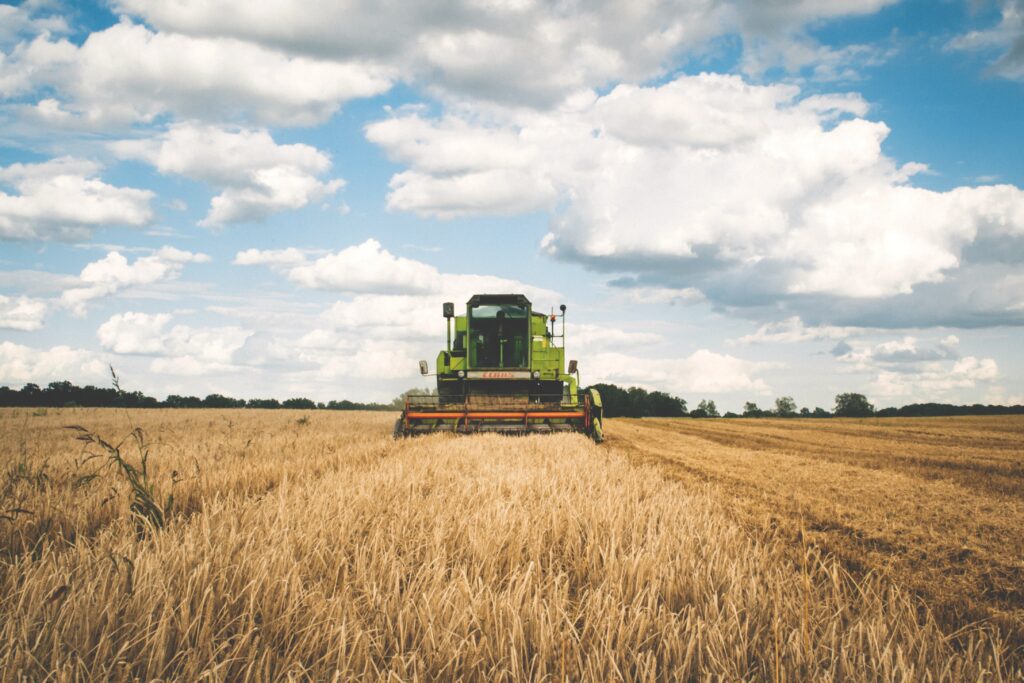You definitely must have noticed that often on roads, there are wild trees of fruits such as guavas, lemons, growing in healthy conditions. Ever wondered who takes care of these plants? Who waters them, fertilizes them, looks after them? No matter what, these plants are always healthy, blooming, and fruitful.
To all these questions, there is only one response: NATURE.
Natural farming is a method in which agricultural methods are related to the laws of nature. This approach works together with the natural biodiversity of each farmed environment, fostering the complexity of living species, both plants, and animals, which along with food plants, form each individual ecosystem to thrive. Masanobu Fukuoka, a Japanese farmer, and philosopher defined natural farming as an ecological farming method in his 1975 book The One-Straw Revolution.
Fertility farming, organic farming, sustainable agriculture, agroecology, agroforestry, eco-farming, and permaculture are related to natural farming but should be differentiated from biodynamic agriculture.

ZERO BUDGET NATURAL FARMING:
A method of chemical-free agriculture based on traditional Indian practices is Zero Budget Natural Farming (ZBNF). Subhash Palekar (Maharashtrian farmer and recipient of Padma Shri) was the initial promoter of ZBNF, who, in the 1990s established it as a substitute method to the Green Revolution, driven by chemical fertilizers, intensive irrigation and pesticides. He argued that the increasing cost of these external inputs was a leading cause of farmers’ indebtedness and suicide, while the effect of chemicals was devastating on the climate and long-term fertility.
The cost of production could be minimized and farming turned into a “zero budget” exercise without the need to invest money on these inputs, or take loans to purchase them, breaking the debt cycle for many small farmers. Jeevamrutha is a mixture promoted by ZBNF, which is made by mixing fresh cow dung with old cow urine, jaggery, pulse flour, water and soil to be applied on the farmland, in place of chemical fertilizers.
This mixture is a fermented one, which aims to increase the activity of microorganisms and earthworms and adds nutrients to the soil. Approximately 200 liters of jeevamrutha per acre of land should be sprayed twice a month; the device should become self-sustaining after three years. According to Mr Palekar, with the caveat that it must be a local Indian breed, not an imported Jersey or Holstein, only one cow is required for 30 acres of land.
For the treatment of seeds, a similar combination, called bijamrita, is used, while concoctions using neem leaves and pulp, tobacco and green chillis are prepared for the management of insects and pests. Soil aeration, limited watering, intercropping, bunds and topsoil mulching are also encouraged by the ZBNF system and extensive irrigation and deep ploughing are discouraged. Mr Palekar opposes vermicomposting, which is the cornerstone of typical organic farming, as it introduces the European red wiggler (Eisenia fetida) to Indian soils, the most common composting worm. These worms, he says, consume radioactive metals and poison groundwater and property
NATURAL FARMING VS ORGANIC FARMING
Often in stores, we see that the vegetables are marked as naturally farmed or organically farmed and many of us don’t know the difference between the two, or which one is better. Even as you read what natural farming is at the start of this blog, I’m sure that it must’ve seemed very similar to organic farming. The purpose of this blog is to educate the reader about the difference between the two methods, so that the user, whether a consumer or entrepreneur, can choose between the two easily by knowing which one will be more suitable for them.
First, let’s talk about the things that make the two methods so similar.

Both natural and organic are chemical-free methods of farming that are more or less poison-free. Both programmes discourage farmers from using any artificial fertilisers, plant pesticides and other farming practices. Both methods of farming allow farmers to use local seed breeds and native vegetable varieties, wheat, pulses and other crops. Methods of organic and natural farming endorse non-chemical and handmade methods of pest control.
Now looking at the differences, here are some of them.
Chemical fertilisers and manure such as compost, vermicompost, cow dung manure, etc. are used in organic farming and added from external sources to farmland. No chemical or organic fertilisers are added to the soil in natural farming. No external fertiliser is directly applied to the soil or given to plants at all. In natural farming, right on the soil surface itself, the decomposition of organic matter by microbes and earthworms is promoted, which gradually adds nutrients to the soil over time.
Organic farming also includes fundamental agricultural practices being carried out such as ploughing, tilling, manure mixing, weeding, etc. There is no ploughing, no tilting of soil and no manure in natural farming, and no weeding is achieved exactly the way it will be in natural habitats. Similarly, as some of us realise, organic agriculture does not operate on a collection of don’t do’s. In organic farming, for example, tillage is an important tool for the farmer; weed control is one of the greatest challenges that an organic farmer would face.
Most definitely, not weeding will lead to a bad crop or a very hard time harvesting. Due to the necessity of bulk manures, organic farming is still costly and has an ecological effect on the surrounding environment; while natural farming is an incredibly low-cost form of farming, entirely moulded with local biodiversity. The Zero Budget Natural Farming (ZBNF) is the most common model in India, with many working models of natural farming around the world. Padma Shri Subhash Palekar established this detailed, natural, and spiritual method of farming.
Organic farming begins with the development of healthy soil, the management of biological activity in the soil and the growth of healthy plants. Whereas natural farming does not aim to establish soil biology but to leave the land alone and naturally allow processes to occur. A collection of things not to do and let nature take over is natural agriculture; again, it is a mentality not a set of working concepts.
Also, if pruning has to be carried out in organic farming on vegetable plants or fruit trees, this can be accomplished by the farmer, unlike natural farming, where it cannot be done because it is a guiding principle set out by the individual who created it that does not occur in nature.
FORMS OF NATURAL FARMING
Natural farming has many ways that it has been practised, over time. Some variations of natural farming and their specifics include:
Farming with fertility
In 1951, the method of “fertility farming” was proposed by Newman Turner, a scheme with the use of a cover crop, no-tillage, no chemical fertilisers, no pesticides, no weeding and no composting. While Turner was a commercial farmer and did not practise random seeding of seed balls, his concepts of “fertility farming” share similarities with the natural farming scheme of Fukuoka. A “natural method” of animal husbandry was also proposed by Turner.
The Native U.S.
The latest research in the field of conventional ecological awareness shows that Native American tribes worked the land in remarkably similar ways to the natural farmers of today for over one hundred years. Writer and Scientist M. “According to contemporary Native Americans, it is only through interaction and relationships with native plants that mutual respect is established.” Kat Anderson writes.

Farming for Nature (Mokichi Okada)
In the 1930s that predated Fukuoka, the Japanese farmer and philosopher Mokichi Okada conceived of a no fertiliser” farming method. Okada used the same Chinese characters as the “natural farming” of Fukuoka, but they are translated slightly differently into English, as natural farming. [23] Agriculture researcher Hu-Lian Xu argues that the right literal translation of the Japanese word is “nature farming”
Kheti Rishi
In India, practitioners such as Partap Aggarwal have called the natural farming of Masanobu Fukuoka “Rishi Kheti” To prepare growth promoters, the Rishi Kheti use cow products like buttermilk, milk, curd and their waste urine. The Rishi Kheti is regarded without any use of chemical fertilisers and pesticides as non-violent farming. They receive natural or organic products of high quality that have therapeutic value. A limited number of farmers in Madhya Pradesh, Punjab, Maharashtra and Andhra Pradesh still use this form of farming in India today.
Farming for Zero Budget
Zero Budget Farming is a variant of natural farming developed in southern India and mainly practised in it. The technique includes mulching, intercropping, and the use of multiple preparations involving cow dung. It is often called spiritual farming. Such on-site preparations are fundamental to the technique and are said to encourage the activity of microbes and earthworms in the soil. Subhash Palekar, an Indian agriculturalist, has extensively researched and written on this system.
Summing up
Organic farming is something that is already gaining traction in India, not only among the farmers but also among the citizens. People have started recognising the health benefits of both organic and natural farming, and the demand for fruits and vegetables farmed using these ways has increased significantly.
You have already read above how the two methods are similar yet different, and how natural farming holds many benefits. Andhra Pradesh, Himachal Pradesh, Gujarat, Haryana, Karnataka and Kerala are some of the states that have been heavily promoting natural farming. Out of these states, Andhra Pradesh has been the most successful in implementing it on a big scale. More than 1 lakh farmers are projected to follow the methods of natural farming in their fields.
At various forums, including the United Nations Convention, Prime Minister Narendra Modi spoke of the need to minimise chemical fertilisers and to encourage organic and natural farming. Union finance and agriculture ministers have also spoken on numerous occasions about encouraging natural agriculture.
In a recent online convention organised by NITI Aayog, Narendra Singh Tomar, Minister of Agriculture of the Union, and Rajiv Kumar, Vice-President of NITI Aayog, strongly advocated natural agriculture and agroecology. Natural farming is the upcoming solution to a lot of agricultural problems, your time to start is now!

